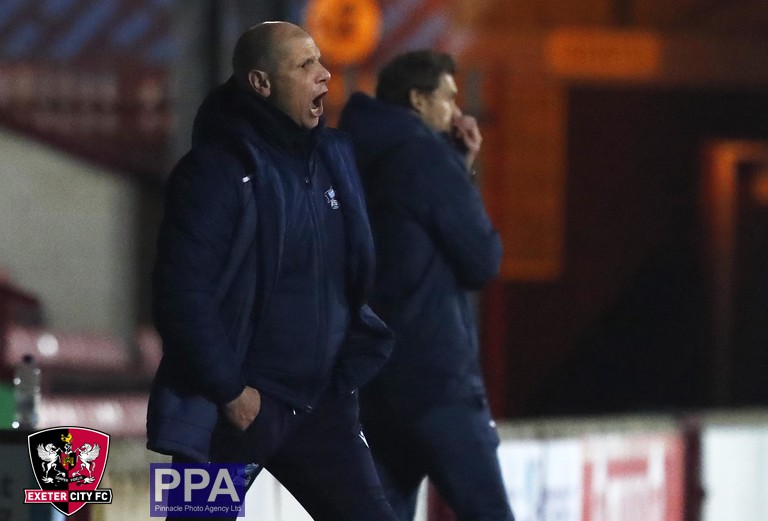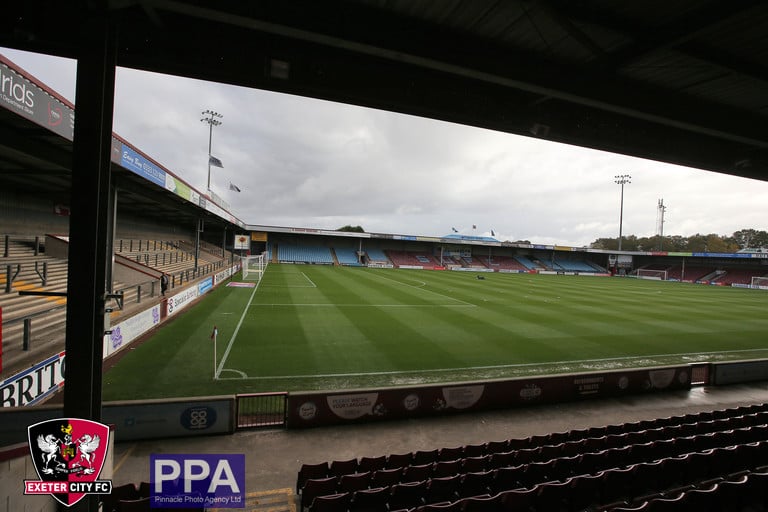Exeter City have another trek across the country on Saturday, where their travels will take them to Scunthorpe.
This is the lowdown on the Lincolnshire Club...
- Founded: 1899
- Nickname: The Iron
- Honours: League 1 (2006/07), Division 3 North (1957/58)
- Home Kit: MACRON claret shirts with blue trim and sleeves, claret shorts, light blue socks
- Away Kit: MACRON Black shirt with yellow claw strikes, black shorts with yellow trim, black socks.
- Form: DDLWL (19th in League Two)
The year of formation for Scunthorpe United is often cited as 1910, but the club can trace its history back to 1899, when Brumby Hall FC, who played at the Old Showground, consolidated their position by merging with other clubs and becoming Scunthorpe United. In 1910, that club amalgamated with North Lindsey United becoming the modern version of the club today.
As is obvious, the club’s nickname reflects its industrial past. Scunthorpe’s Iron and steel industry was established in the mid-19th century after the discovery of ironstone just east of the town. Initially the iron ore was sent to Sheffield until the 1860’s, when better transport links enabled local production to be possible. Total iron production from Scunthorpe at the height of the First World War reached 520,000 tonnes a year, by 1918 and the end of the war, production had raised to 650,000 tonnes.

(Image: Anna Gowthorpe/PA Wire)
The Club made their football league debut in August 1950 in a 0-0 draw with Shrewsbury at the Old Showground. A month later Ted Goris became the first Scunthorpe player to score a hat-trick in the League with his only treble of his career. In 1958 Scunthorpe were promoted to Division 2 for the first time in their history after winning the Division 3 North title, but after relegation in 1964 Scunthorpe would wait a while before threatening the second tier again.
In 1968 Scunthorpe found themselves in the Football Leagues basement tier, where they would yo-yo between Division’s 3 and 4 for the rest of the 20th Century. In 2006/07 under Nigel Adkins, Scunthorpe returned to the Championship after winning League 1- finishing 16pts clear of second place Bristol City. The Iron bounced between League 1 and the Championship for the next 3 years but dropped back down to Tier 4 in 2013.
The Iron had a nervy escape from relegation last season, finishing just three points over the drop zone. This season the clarets have started stronger, with six points for six and sit in 19th, prior to City’s visit.
The Manager
Neil Cox
Back at his boyhood club, Cox returned in August after Paul Hurst said his farewells. Currently in his first league management role, the 49-year-old has been assistant at Wimbledon in the midst of their meteoric rise up the football pyramid, and most recently Notts County in the National League.

The former England Under 21 international had a strong playing career. Coming up through the Iron Youth, the defender joined Aston Villa in 1991 and helped the Birmingham side win the League Cup in 1994. At the start of the 94/95 season, Cox became Middlesbrough’s then most expensive signing, also being the first to break the million-pound mark. Neil had spells at Bolton, Cardiff, and Crewe after, but the bulk of his playing career was at Vicarage Road with Watford. Cox made over 200 appearances for the Hornets in a 6-year stay.
The Ground
- Name: The Sands Venue Stadium (Glanford Park)
- Capacity: 9,088
- Year opened: 1988
- Address: John Brownsword Way, Scunthorpe, North Lincolnshire, DN15 8TD
In 1988, The £2.5m project was the first purpose-built football stadium for 33 years since Southend’s Root’s Hall. Scunthorpe originally played at the Old Showground but realised that the substantial improvements needed to renovate the ground were not viable after the 1985 Bradford City Disaster.

After redevelopments to the two end terraces, the capacity of Glanford Park was reduced from 11,000 to its current value. The Stadium has hosted some of the big names in English football. In 2010, Scunthorpe welcomed Manchester United in the League Cup which brought in a record attendance of 9,077 fans. The Premier League giants ran out 5-2 winners.
In July 2019, Scunthorpe United confirmed planning permission to build a completely new 12,000-seater stadium on the site. The redevelopment of Glanford Park will be built on a stand-by-stand basis over multiple seasons, allowing the Iron to continue playing there without the need to relocate.
One to Watch
Ryan Loft
The former-Exeter loanee has made a solid start for Scunthorpe this season. Loft opened United’s account for the season against Swindon Town as he calmly dispatched a penalty.

The Tottenham youth graduate had spells at Braintree and Stevenage before joining Exeter in January 2018, where he made the one solitary appearance- in a 1-0 away loss to Mansfield.
The 6-foot-2 striker will be the point of attack for The Iron and will look to create openings in front of the City box.
Head-to-Head
At just over 3 goals a game, fixtures against Scunthorpe are usually quite open affairs. Both teams have handed out their fair share of thrashings too. Exeter have scored more than 4 against Scunthorpe no less than seven times, on some occasions that still wasn’t enough to win the game.
Over the 56-year history of the fixture there have been 5-4’s; 4-3’s; and a 7-1, though the latter did not favour Exeter. City’s ‘recent’ form against Scunny (dating back to 2011) marks: WWLWW.
Exeter City wins: 19
Draws: 14
Scunthorpe United Wins: 23
Recent Encounters
Scunthorpe United 0-2 Exeter City | Sky Bet League Two | Sands View Stadium | 9th March 2021
A superb Matt Jay free kick and a Sparkes solo effort did the damage as Exeter left Lincolnshire with all three points.
Exeter City 3-1 Scunthorpe United | Sky Bet League Two | St James Park | 24th October 2020
Joel Randall, Matt Jay and Jake Taylor were all on target as the Grecians coasted to a comfortable victory at EX4.
Scunthorpe 3-1 Exeter | Sky Bet League Two | Glanford Park | 22nd October 2019
James Perch rocketed from 30 yards as Matt Jay’s strike proved little consolation, on a cold and difficult night in Lincolnshire.
And Finally…
Frank Soo, who was Scunthorpe manager between 1959/60 was a pioneering figure of Chinese ethnic background in English football. He was both the first player and manager of Chinese descent in the Football League and also the first to appear for England (albeit in an unofficial wartime international).
